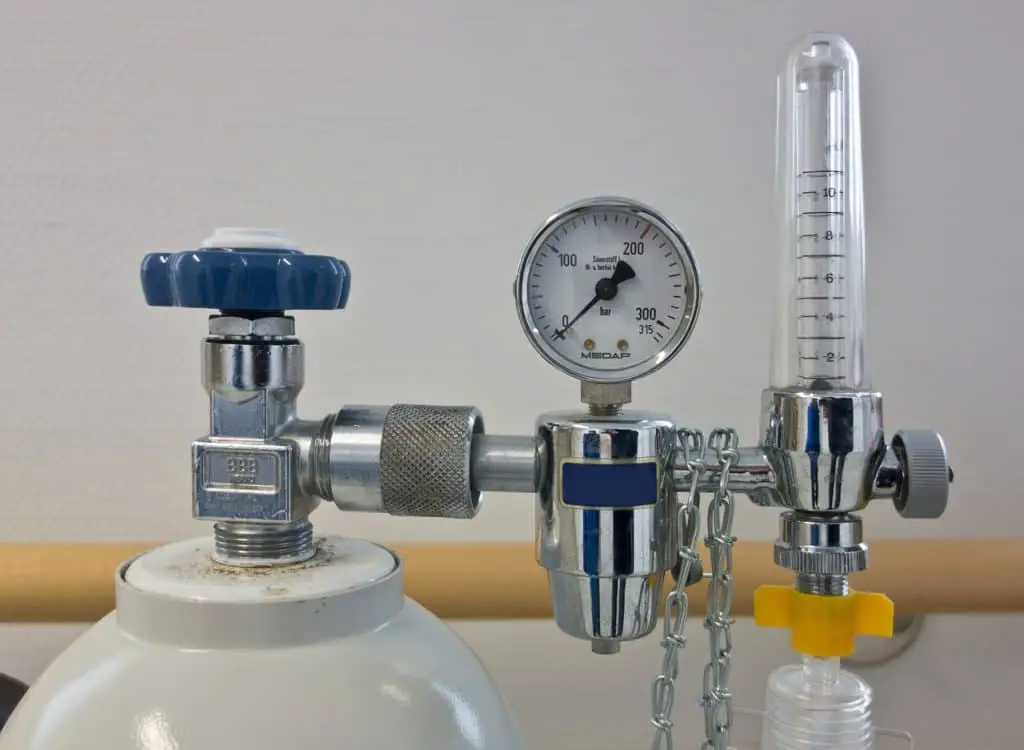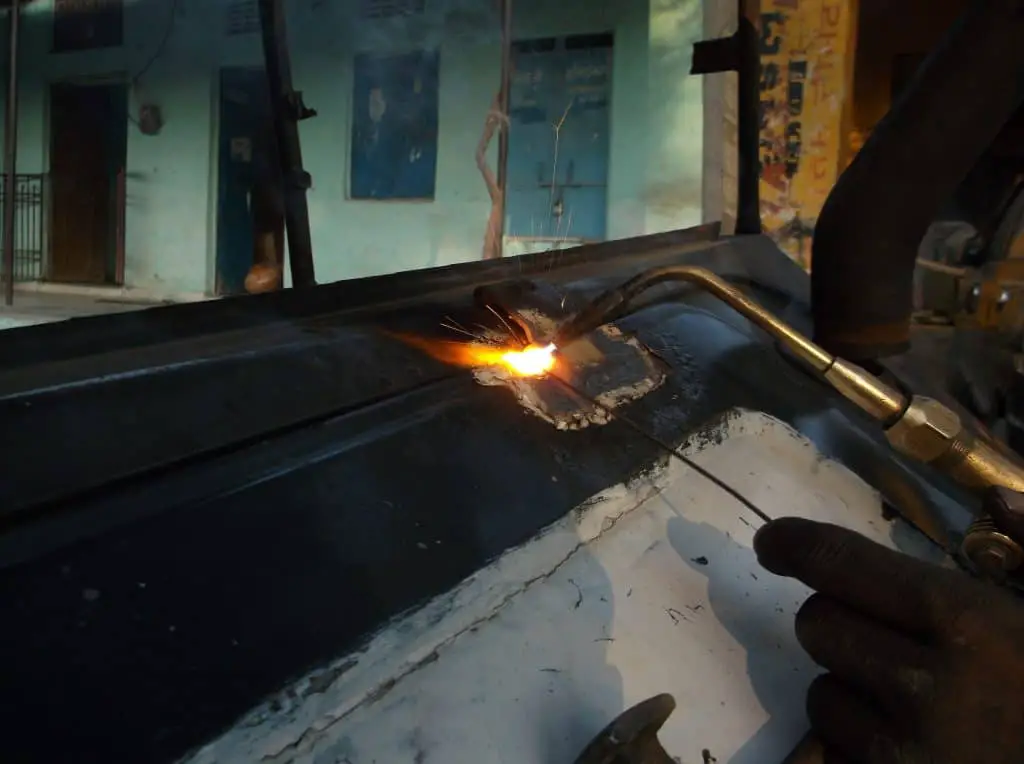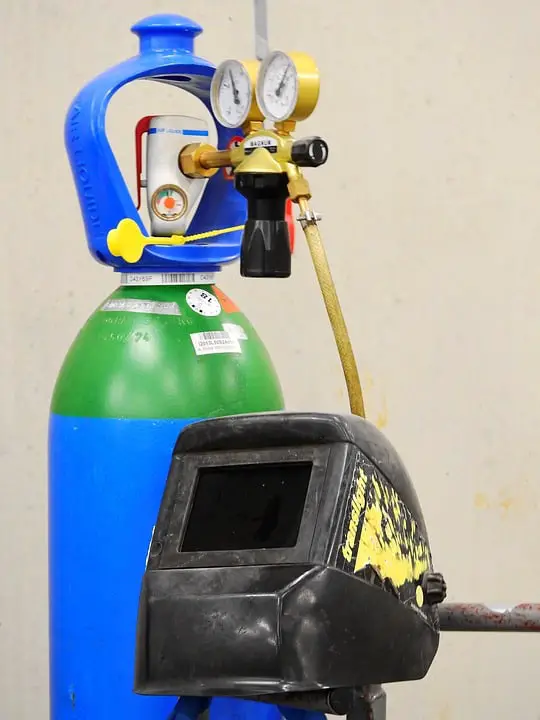This post contains affiliate links to products, services, or education. We may receive a commission for purchases made through links.
Discussions of the potential for medical oxygen to be used for welding seems to be questioned quite a bit, and for a good reason. During welds, you want to ensure that you are using the proper equipment, for safety and effectiveness, so it certainly is a legitimate question.
Can you use medical oxygen for welding? Technically, yes, you can. However, medical-grade oxygen is not the top solution for welding. Although technically the oxygen itself is the same, the quality and effectiveness of each are much different.

Today, we’ll be taking a look at the differences between the types of oxygen, exactly how efficient medical oxygen is for welding, and more. Also, we’ll be looking at the equipment used, as well as various safety measures during the welding process as well.
What is The Oxygen Used for Welding?
Welding gas and oxygen are used to weld and cut various types of metals. Through this process, oxygen is used to help increase the flame temperature to assist in the process.
The oxygen used is pure and should not be confused with a regular air tank, as they are not the same thing. There are different grades and quality to oxygen, which is why you typically want the purest form to have the best success during use.
Oxy-Fuel Torches

Specific torches are made that infuse oxygen with welding gas to help with this method for welding. These torches can do a variety of things and are quite handy to have around.
One of the main reasons to have them is not only for heating the metal but also to create a neutral type of flame to both join and cut metal.
These torches won’t cost you much more than a regular welding torch and can be found in similar locations and online as well. I recommend researching the specific ones you’d be interested in and see which one would be the best fit for you and your needs. Find some of our recommendations here.
Differences between Welding & Medical Oxygen
The most considerable difference between these two oxygens is their grades, as they have different purposes. One is used for welding, while the other is meant to help regulate and support breathing in a human body. Also, the pureness levels between these two are slightly different as well. The pureness levels are:
- Welding Oxygen- 99.2%
- Medical Oxygen- 99.5%
Research is still ongoing in terms of the differences between the different types of oxygen that is used commercially, which we’ll be touching on a bit more later. However, pureness and quality are currently the main differences between these two variations of commercial oxygen.
Controversy Between Oxygen Types
There are still ongoing discussions as to whether the different oxygen types available are much different from one another. As I mentioned, there is a difference in the quality/pureness of the oxygen.
However, there are still many people out there who are always curious about just how significant the differences are.
In addition to the differences in quality between medical and welding oxygen, it seems to be widely acknowledged that there is a separation between oxygen uses due to insurance, for reasons of liability.
In terms of getting oxygen, though, medical-grade oxygen does require a doctor’s involvement for it to be received. This necessary paperwork is why many question how medical oxygen is even obtained for tasks such as welding.
It’s a good question, as medical oxygen shouldn’t be easily obtained, unless through a doctor’s prescription written specifically for it. It sounds like someone forgot their respirator.
How Effective is It?
Although I mentioned that I don’t recommend using medical oxygen first over welding oxygen, it still can get the job done. Although it won’t be quite as effective, and may even run out faster, it can be a decent alternative if you need oxygen. That is if you find yourself without the welding grade and only your prescribed oxygen tank handy.
I will say, you will fare OK for usage, and it appears as though it can be a viable alternative. But again, I don’t see it as a better option overall.
Where to Get Welding Tanks?

Welding tanks can be purchased through many distributors, and a Google search should bring those up near you right away. Also, there are many ways to get the tanks themselves online as well, such as sites like Amazon.
Be sure to check out our article on if welding tanks expire.
It is safe to say at this point, that these tanks aren’t that hard to get. Meaning you shouldn’t have to resort to medical containers over welding cylinders, as they are readily available online.
I think the best, most straightforward way to get them these days is online. Shopping for tanks online has become the most effective way nowadays for shopping and shipping.
Certain stores will sell them as well, and you don’t always have to go through a distributor. For more information on welding cylinder sizes check out our article here.
Is There Any Danger to It?
When it comes to the welding process, there is always the question of danger, no matter what the situation may be. This is due to the nature of welding, and just how dangerous it can be.
However, when it comes to using a different oxygen tank, there shouldn’t be any worries with changing the tank to medical-grade.
So, if you have any worries about it being dangerous to use another type of oxygen, there should be no issues with it. However, it is best to always do research beforehand, just for safety precautions.
Safety Precautions
As I’ve mentioned, you need to ensure safety when performing welding. The process can be quite dangerous throughout, so you’ll want to provide as many safety precautions as possible when performing these tasks.
For starters, you must make sure that you have the proper welding helmet to protect your vision and face. The welding process can reach extreme levels of brightness, so eye protection is an absolute must.
Also, you’ll want to protect yourself from the fumes with a respirator. Fumes can cause severe and permanent damage to your body if you do not protect yourself from them. Here are some recommended respirators to stay safe.
Another thing to remember is that a solid pair of welding gloves are quite important, so you’ll want to make sure that you are wearing the proper pair.
You may also want to read our article on whether welding gloves are shockproof.
Overall, safety precautions are quite necessary when it comes to welding, so make sure that you understand the risks involved in it and how to prepare yourself properly.
Conclusion
Overall, there seem to be no substantial differences between the medical-grade oxygen and that which is used in welding. However, there are differences in quality and pureness, so for these reasons, I recommend (amongst other things) sticking with the specific oxygen that you’ll find for welding purposes.
However, if you are in a situation and need an alternative, medical oxygen should work just fine for the time being. It shouldn’t give you any issues, and it will do the job just fine, with the only real difference being the purity of the oxygen.
Also, equipment such as torches, gloves, helmets, tanks, and so on are easy to find online, and at reasonable prices as well. Also, you can find these products quickly in-store as well. However, I recommend researching the products in which you want to get, to ensure that it is right for you.
